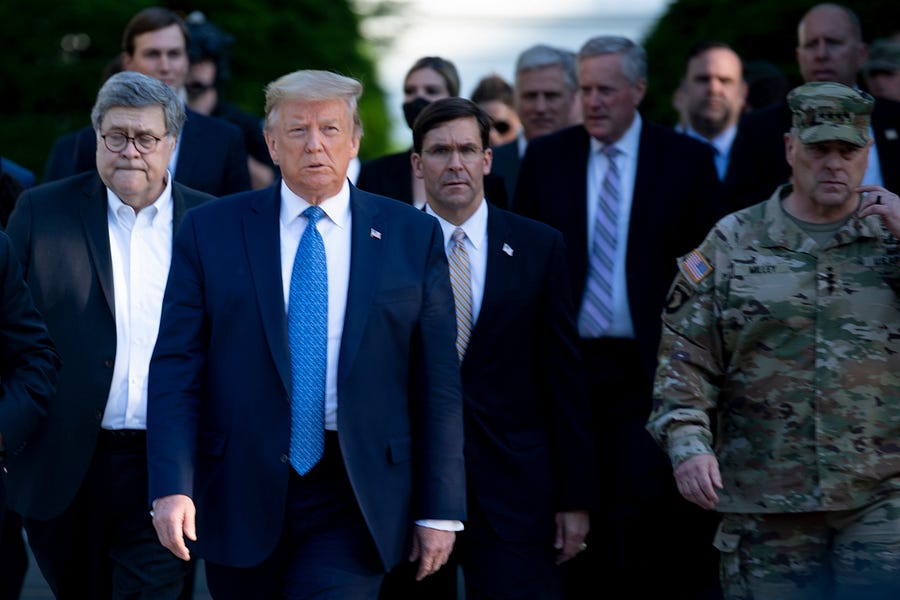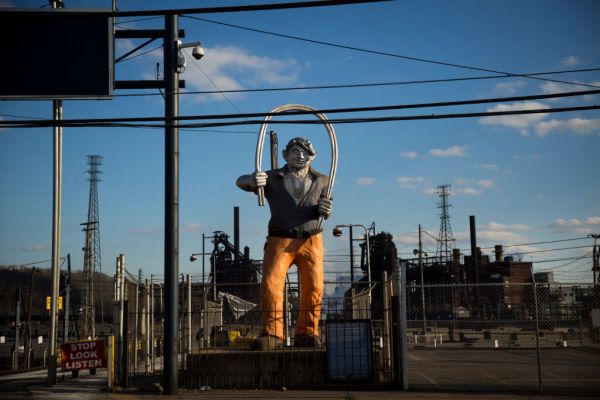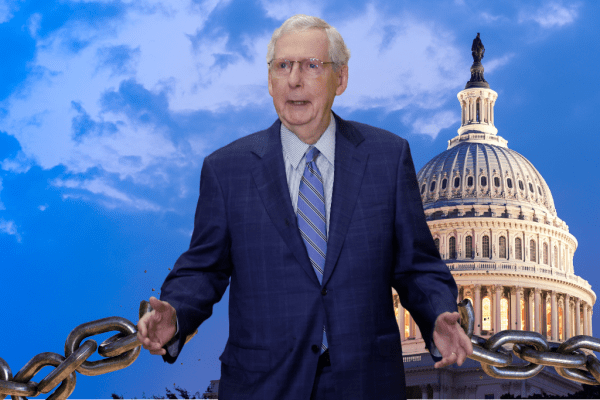Historical analogies are sometimes interesting and occasionally illuminating, but often they’re a substitute for thinking seriously about what’s going on in front of you.
For instance, around the time President Trump started tweeting “LAW & ORDER!” at seemingly random intervals, a slew of political observers concluded that the Trump White House was going to replay Richard Nixon’s successful 1968 bid for the presidency. “Law and Order” was indeed one of Nixon’s campaign themes, though the official slogan was “Nixon’s the One”—which raises the question of whether there was a hidden pro-Nixon message in the Matrix movies. (Keanu Reeves’ character, Neo, was also referred to as “the One.”)
There wasn’t. But there’s as good a case for that as there is for the idea that this is 1968 all over again.
It’s true there was a remarkable amount of violence and social unrest in 1968, as there is today. But by almost any measure it was worse in ’68. First of all, the overall crime rate was higher in the late 1960s. More importantly, political violence was worse. Martin Luther King Jr. was assassinated on April 4, 1968. Sen. Robert Kennedy, arguably on his way to securing the Democratic presidential nomination after winning the California primary, was assassinated two months later. The riots after King’s death claimed dozens of lives and did vastly more damage in cities across the country than the current unrest has.
For these and many other reasons, the political situation was very different. Nixon was pushing law and order, but that didn’t have the racial connotations such a campaign would have today, against the backdrop of the George Floyd protests. That’s in part because Nixon was running in a three-way race against then-Vice President Hubert Humphrey and the de facto Dixiecrat but officially independent George Wallace. Nixon’s law-and-order messaging was aimed more at the hippies and campus radicals, not African Americans.
Moreover, Nixon was running as the return-to-normalcy candidate. He was no firebrand “new conservative” like Sen. Barry Goldwater, nor was he an anti-integration populist like Wallace. Nixon was the former vice president under the staid and blissfully boring Dwight Eisenhower.
Trump is an incumbent presiding over chaos while claiming to be the anti-chaos candidate. But people felt like the times were chaotic before George Floyd was killed, and a great many Americans blame Trump for it. Yes, if looting continues and Democrats (and the media) are perceived as encouraging mayhem, Trump’s law-and-order rhetoric may help him win in November, but it won’t be because this is a replay of 1968.
There’s a broader point here. Historical analogies mislead for many reasons. First, the past is a different place. Technology, immigration, and changing attitudes on everything from sexual norms to religion to popular culture are constantly transforming how society works. If Nixon had Twitter, who knows what 1968 would have looked like. America today is roughly 60 percent white. If it were more than 80 percent white, as it was in ’68, I’m not sure how our politics would be different, but I’m sure they would be.
Brink Lindsey, now of the Niskanen Center, once observed that both the left and the right are nostalgic for the 1950s, and “the only difference is that liberals want to work there, while conservatives want to go home there.” The problem is that the economy of the 1950s, with its high taxes and strong unions, no longer exists. It cannot be re-created with the right economic policies, because the economic conditions that created that status quo are gone. The war-ravaged economies of Europe and Asia have been rebuilt, factories have been automated, and capital can hide from heavy taxation.
Similarly, the sexual revolution, the birth control pill, the civil rights movement, immigration and countless other changes make the Ozzie and Harriet lifestyle a thing of the past.
Another reason historical analogies distort our understanding is that a lot of people just don’t know much history. If the only wars you know anything about are World War II and Vietnam, you’re probably going to talk about things—“appeasement,” “quagmires” etc.—that don’t easily fit today. And if you don’t know anything about World War II, you might talk about “America First” as if it’s a new idea.
It’s easy to find the echoes of the past in the present, but if you’re lost somewhere, echoes are a very unreliable guide to finding your way.
Photograph by Brenda Smialowksi/AFP/Getty Images.







Please note that we at The Dispatch hold ourselves, our work, and our commenters to a higher standard than other places on the internet. We welcome comments that foster genuine debate or discussion—including comments critical of us or our work—but responses that include ad hominem attacks on fellow Dispatch members or are intended to stoke fear and anger may be moderated.
You are currently using a limited time guest pass and do not have access to commenting. Consider subscribing to join the conversation.
With your membership, you only have the ability to comment on The Morning Dispatch articles. Consider upgrading to join the conversation everywhere.